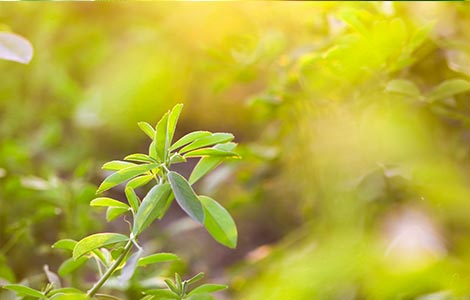
The right amount of boron is crucial to producing high yields of lush, highly digestible alfalfa, says University of Wisconsin Soil Science Professor Emeritus Dr. Emmet Schulte. When a plant is deficient in boron, its growing points shut down, and it will eventually die if the deficiency persists. On alfalfa, the symptoms include death of the growing tip, a bushy appearance of the plant, and yellowing of the top leaves.
Schulte notes that boron deficiencies in Wisconsin and elsewhere are more widespread than other micronutrient deficiencies today. University of Wisconsin Professor Emeritus of Agronomy Dr. Dwayne Rohweder agrees. “Even though many fields have had long-term manure applications, soil test data show that 97% of Wisconsin’s soils are below the recommended boron level of 0.5 ppm,” he says.
So how do you get just the right amount of boron to your plants? Texas A&M researcher Dr. Vincent Haby notes that in addition to soil testing, growers should take extra care to make sure that boronis applied uniformly. “While boron could be applied in a band, the best and easiest way to get boron to alfalfa is to broadcast it in a blend with the potassium and/or phosphorus that growers need to apply anyway.”
As growers use higher-yielding alfalfa varieties and increase their use of potassium and phosphorus, the potential for boron deficiency increases. The faster a plant grows and the more it yields, the more boron it requires.
Boron may be present, but not available
Of the total boron in the soil, only 0.5%-2.5% is available to plants. Soil organic matter is the storehouse for most of the boron in soils. As a result, notes Schulte, most of the available boron is in the plow layer, where organic matter content is highest. When the soil surface dries out, plants are unable to feed in the zone where most of the available boron is present because of decreased root activity. This can lead to boron deficiency in times of drought.
Boron availability is also sensitive to soil pH levels. Crops grown on soils with a pH of 7.0 or higher often show signs of boron deficiency. Liming acid soils can decrease boron availability and increase a plant’s response to added boron.
Leaving the soil acid is not an option for alfalfa growers, and it wouldn’t help the boron situation much anyway. “When soil is left acid, it is more susceptible to boron leaching,” says Haby.
The faster a plant grows and the more it yields, the more boron it requires.
Manure may not be enough
Since manure contains trace amount of boron, some dairy farmers reason that they can apply all the boron their fields need by spreading manure. “Adding organic matter certainly helps,” says Haby. “But most alfalfa growers don’t have enough manure available at a reasonable cost to get sufficient boron into the soil this way.” If you are buying manure to put on your fields, Haby recommends that you have it tested for boron content. And if your aim is to raise boron levels, the most economical way is still to blend Granubor® in with your other fertilizer applications.
Testing for boron deficiency
A standard soil test is good, but it should be augmented with plant analysis and watching for boron deficiency symptoms.
Boron availability can fluctuate with soil conditions, and levels found in plant tissue will vary with growth stage. According to Schulte, how you interpret a soil test for boron depends on soil texture and plant boron requirements. Where the crop requirement is high, as in the case of alfalfa, and soil tests low or very low, apply 2 or 3 lbs of boron per acre, respectively. If the soil tests excessively high in born, Schulte recommends discontinuing application.
Note the stage of plant development when tissue sampling. If there is any boron deficiency, it will occur in the younger tissue, so it is a good practice to sample the top 6 inches of growth on alfalfa. According to Haby, in seriously boron-deficient alfalfa plants, the undersides of young leaves have a rosy red color, whereas the top sides are yellow. Under extreme boron deficiency, the young leaves will turn brown and the plant will die.
Download Agronomy Notes